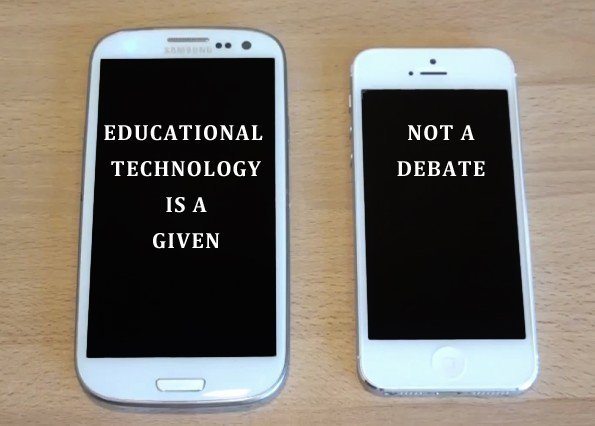In 2012, the One Laptop Per Child organization dropped Motorola Xoom tablets preloaded with ABC and literacy games, movies, e-readers, and other apps in remote villages of Ethiopia. The catch? No instructions were included.How much could a group of illiterate children learn with the technology? You may be surprised. Nicholas Negroponte, founder of One Laptop Per Child, shared what happened at the 2012 MIT Technology Review’s EmTech conference: “Within five days, they were using 47 apps per child, per day. Within two weeks, they were singing ABC songs in the village, and within five months, they had hacked Android,” Negroponte said (Talbot, 2012).While these research findings leave much to be explained, they do highlight an important implication for K-12 education today: mobile media technology can be a powerful learning motivator.
Top 8 Reasons Why Digital Learning Is Here To Stay
- 21st Century Jobs
It is serendipitous that today’s youth are eager to learn technology, because those skills are forecasted to remain in the future job spotlight. According to the U.S. Bureau of Labor Statistics biennial update, “By 2020, employment in all computer occupations is expected to increase by 22%” (cited in Thibodeau, 2012). Due to the fast pace at which technology is advancing, some of the jobs may not even have been invented yet. According to The United States Department of Labor’s Report, Futurework - Trends and Challenges for Work in the 21st Century, “65% of today's grade school kids will end up at jobs that haven’t been invented yet” (as cited in Zappa & TFE Research, 2013). While we can only imagine exactly what these jobs will be, they will no doubt be rooted in technology. Government and educational policymakers are beginning to take notice and change is happening…slowly. - Common Core State Standards
For example, the new Common Core State Standards (CCSS) are being implemented across the states in 2014 and emphasize critical thinking, writing across the curriculum, and the use of technology. Education companies and organizations are getting on board by leveraging the technology of tablets to bring digital textbooks and all-in-one, next generation curriculum products to the classroom. Pearson Education, one of the largest textbook education publishers in the world, and Apple, known for it’s avant garde design and user experience, have recently paired to bring a K-12 Common Core-aligned digital curriculum in math and English language arts to the Los Angeles Unified School District (Bowman & Muller, 2013). While the learning outcomes of this curriculum are yet to be unveiled, this $30 million project highlights the direction of education today and points to future development of changes to the traditional classroom: student-driven learning, teacher as facilitator rather than instructor, and the use of learning analytics, interactive media, and educational gaming options. “In the next 2 or 3 years, sleek high-end tablets will begin to edge out their electronic ancestors. By the end of the decade, sophisticated tablets will be the primary platform, leveraging the power of technology with dazzling images, vast memory, speedy connections, convenient applications and links to faculty and other students” (McFadden, 2012). - Shifting Costs and Expectations
Skeptics balk at some of the issues surrounding going digital. Funding? Tech support? Equity? Funding? These are valid concerns. However, a full embrace of digital education is going to necessitate a change in thinking about the way schools, and our society, think about and spend money on education. It is just not realistic to think that public education, the social father of our children, is going to leave them technologically illiterate. The U.S. Government agrees. “Noting that annual textbook costs for U.S. K-12 public schools has reached nearly $8 billion", the FCC and the Department of Education have encouraged the country to transition to interactive digital learning within the next five years (T-mobile helping to advance, 2012). There is no doubt that with the integration of tablets and the digital curriculum, apps, e-readers, and e-texts that will surely be paired along with them, will necessitate a shift of those textbook costs. Pearson’s Common Core System of Courses comes preloaded with Pearson’s math and English language arts curriculum, apps such as iWork, iLife, and iTunes, and a variety of educational third-party apps (Bowman & Muller, 2013). With a complete math and English curriculum and additional built in resources, the need for textbooks is unnecessary. Students are able to access media and web resources related to the curriculum as well as engage in learning without difficult-to-plan trips to the library or the run down lab. The ultimate costs of digital textbooks and curriculum, coupled with the resources of the world wide web brought to the classroom via tablets, will eventually make more sense than printing, binding, and delivering textbooks that are often instantly dated the moment they are printed. “Although [digital textbooks] might be more expensive initially, the volume of sales should result in increased opportunity for lower unit costs. The logical result is more faculty demand, more publisher investment, and faster growth" (McFadden, 2012). Although logic says one thing, tradition says another. There will no doubt be a struggle in changing expectations and perceptions of the old guard, but even so, some of the benefits of these devices are undeniable. - Customization
Today’s classrooms are filled with textbooks that are immediately outdated the minute they are printed. They are one size fits all, and in today’s diverse world, that isn’t cutting it. With mobile media and digital textbooks, instruction can become more individualized to meet the needs of different learners with interactive, language and vocabulary options, and assessment tools, they “encourage better student performance, engagement and retention” (McFadden, 2012). Imagine being able to select grammar units, short text, and writing models to fit the needs of a particular class of English language learners. To be able to offer extra practice or a review lesson at the click of a button far supersedes the options of the past, which relied on extra work for already exhausted teachers. - Equity
With the world moving forward to a future of technology, it is crucial that experimentation and learning with mobile media begin early in the public school domain. In an age of the increasing divide between those who have and those who have not, leveling the playing field of technology is key. If the jobs of the future require technology, and “the great equalizer” isn’t preparing students in all socio-income brackets, that divide will only get bigger. - Collaboration
Social media applications can be mobilized to promote collaboration. TvInvite, a San Francisco Bay Area start-up company, is currently working on a web-based application to allow students in remote locations to synchronously view a film, webinar, or television program while engaging in real-time chat via a Twitter-like feed. When free market companies create products to meet the demand for 21st century learning, the implications for classrooms, blended, and online learning are limitless. - Ownership
No matter how students use their mobile devices, they can benefit from learning to use technology in any capacity. Technology may bring that element of ownership, which seems to be missing in education today. Eliot Soloway, chief executive officer of GoKnow, Inc. and a longtime expert on handheld computing in schools says, “Students spend more time doing schoolwork on mobile devices than they would with paper and pencil because it's an affirmation of who they are and it's readily available…In fact, he says he has seen 30 percent improvement when children use mobile devices on the same curriculum they used to cover without them” (Ullman, 2011). Just getting students involved in their own learning can be considered a huge success whether one of the goals is to help students become life-long learners or to simply remain engaged in class. - Endless Possibilities
The future brings even more possibilities when tablets or other mobile media devices are combined with built-in next generation curriculum and learning management systems are used in conjunction. Data learning analytics may allow teachers to figure out how likely a student is to do well on an assessment given his past work. Gesturing technology may help determine how well students understand a lesson depending on their keystrokes. Synchronous or asynchronous e-learning environments may replace the daily grind of classes from 8:00-3:00 P.M. on campuses all together. There is no doubt that the classrooms of tomorrow will be dramatically different than those of the 20th century.
Digital learning is coming whether people like it or not. The new Common Core State Standards call for it. Twenty-first century readiness requires it. Future jobs rely on it. Kids want it! It will no doubt be a long transition period while educators, publishers, technology companies, and government officials negotiate appropriate boundaries, funds, and goals, but there is no doubt that digital education and mobile media devices are on the horizon.
References
- Biancarosa, G. and Griffiths, G. (2012). Literacy challenges for the twenty-first century. The Future of Children. 22 (2). 139-160. Retrieved from http://www.jstor.org/stable/23317415
- Bowman, A. and Muller, T. (2013). Apple awarded $30 million iPad deal from LA unified school district. Apple Press Info. Retrieved from http://www.apple.com/pr/library/2013/06/19Apple-Awarded-30-Million-iPad-Deal-From-LA-Unified-School-District.html
- Common Core State Standards Initiative. (2012). Implementing the common core state standards. Retrieved from http://www.corestandards.org/
- Lopez-Valcarcel, J. Chief Digital Officer at Pearson. Keynote Speaker at The Ed Tech Revolution. TNW Conference Europe 2013
- Mcfadden, C. (2012). Are textbooks dead? making sense of the digital transition. Publishing Research Quarterly, 28(2), 93-99. doi: http://dx.doi.org/10.1007/s12109-012-9266-3
- Rosefsky, S. A., & Opfer, V. (2012). Learning 21st-century skills requires 21st-century teaching. Phi Delta Kappan, 94(2). 8-13.
- Talbot, D. (2012). Given Tablets but No Teachers, Ethiopian Children Teach Themselves. MIT Technology Review. Retrieved from http://www.technologyreview.com/news/506466/given-tablets-but-no-teachers-ethiopian-children-teach-themselves/
- Thibodeau, P. (2012). IT jobs will grow 22% through 2020, says U.S. Computer World. Retrieved from http://www.computerworld.com/s/article/9225673/IT_jobs_will_grow_22_through_2020_says_U.S.?pageNumber=1
- T-mobile helping to advance mobile learning and digital education for K-12 schools in the U.S. (2012, Mar 29). Business Wire. Retrieved from http://ezproxy.nu.edu/login?url=http://search.proquest.com/docview/963670366?accountid=25320
- Ullman, E. (2011). The new one-to-one. Tech & Learning, 31(7), 54-57. Retrieved from http://ezproxy.nu.edu/login?url=http://search.proquest.com/docview/848431340?accountid=25320
- Zappa & TFE Research, 2013. Envisioning the future of education technology [infographic]. Retrieved from http://envisioningtech.com/envisioning-the-future-of-education.pdf









